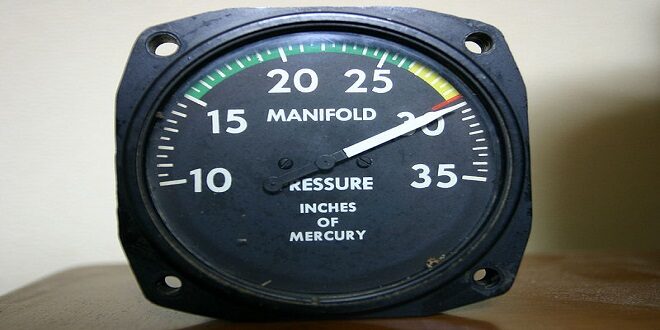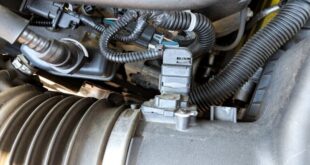This sensor is used to determine the crankshaft position. Usually, there will be a reluctor wheel on the crankshaft itself and a sensor that reads off of each tooth on the reluctor wheel itself. As such, the position of the crankshaft may be determined by the teeth on the reluctor wheel which interrupts the magnetic field produced by the magnet located within the sensor itself.
For the GM LS1 crankshaft position sensor, cylinder position identification may be made within around 90 degrees of crankshaft rotation.
This sensor measures changes in the pressure exhibited within the intake manifold of the engine. When the manifold pressure changes, there is a corresponding change in the output voltage of the MAP sensor. The ECU uses this output voltage in a transfer function to calculate the manifold air pressure.
When the engine is at wide-open throttle, the intake manifold pressure is the same as the outside air since the throttle blade is completely open. On a GM system, this would measure as 100 percent of the barometric pressure. The MAP sensor is also used in some applications to measure the barometric pressure which helps better determine the operating conditions in which the automobile is operating.
Engine Coolant Temperature Sensor
The engine coolant temperature sensor has a relatively simple operation. It consists of a sensor mounted in a location that allows contact with the engine coolant and its resistance changes as a function of temperature.
When the temperature of the coolant increases, the resistance of the temperature sensor decreases which therefore increases the voltage value supplied back to the ECU (the ECU supplies the required voltage for normal sensor operation).
Intake Air Temperature Sensor
his sensor is usually a thermistor. The resistance is a function of temperature. This is usually mounted before the throttle body in fuel-injected engines. Just as the coolant temperature sensor, the air temperature sensor receives an input voltage from the ECU. The output voltage is dependent on the resistance level of the thermistor itself. As the temperature increases, the resistance increases.
As such, it is possible to fool the ECU into thinking that the ambient air is at a higher temperature than the actual value. Some performance applications use this trick in order to force the ECU to pull timing out of the spark advance table in the spark map. The author has used trick in order to manually pull timing for a nitrous oxide assisted application.
Throttle Position Sensor
This is another very important sensor that is used to determine the throttle position (the position of the throttle blade within the throttle body). It is a variable 45 resistor that receives its input voltage from the ECU and outputs a voltage back to the ECU which is a function of the current resistance value of the throttle position sensor.
Last word
It is important to note that some very important values are displayed as a function of throttle position, especially in some other types of engine management other than MAF and Speed Density.
 TRUTHREVIEWERS
TRUTHREVIEWERS

